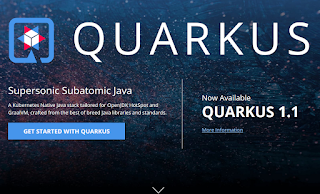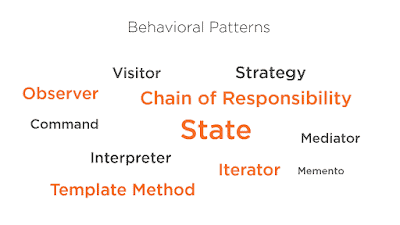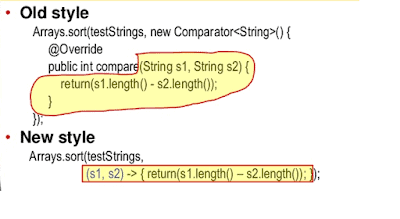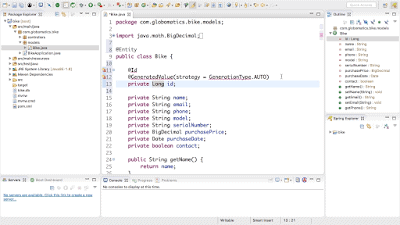Hello guys, first of all, I wish you a very Happy New Year 2020. I have been sharing a lot of roadmaps to become a Web developer, DevOps engineer, and recently React.js developer. One of the requests I received from many of my readers was for creating a Java Developer Roadmap. Since Java is my expertise, It wasn’t a problem to create a Java Developer Roadmap, but it took slightly longer for me to create one because of the limited time I get. Anyway, I am finally ready to share my Java developer RoadMap with you. This Roadmap contains my years of experience and the unobstructed path of how to become a Java expert. It answers many burning questions like which technologies a Java developer should learn?What tools make you a better Java developer? And, which framework a Java developer must absolutely learn.
One of the things I tried with this roadmap is that to keep the exposure as short as possible, I have avoided mentioning many alternatives, particularly when it comes to libraries and tools and stick with industry-standard tools and libraries.
I have kept it simple so that most of the people can follow it and only included the essential stuff, but if there is enough desire, I am thinking to post The Java Developer RoadMap 2.0 to add some advanced things like JVM internals, Profiling, Java 9 Modules, Cloud Native Java, different cloud platforms like AWS, GCP, or Azure, and more advanced tools like Chef for DevOps and much more.
If you are interested, you can find a more exhaustive list on separate blog pots, which I have listed in the further learning section. Anyway, let’s go through this Java Developer RoadMap to understand how to become a Java developer in 2020.
Btw, you by no means need to understand everything on this roadmap to become a rockstar developer. In fact, you don’t even need to take them that seriously if you don’t want to. Instead, use these maps as a starting point to help guide your learning as you go.
Mandatory skill for any Java developers
1. Git & Github
One of the most popular version control system. It’s just not possible to live without Git anymore. You can check out The Git Complete Guide on Udemy to start with.
2. Linux
Not just a web developer but for any programmer, the Linux command line is very, very important, and I strongly recommend you to spend some time to learn them. You can use these free Linux courses to start learning Linux.
5. Data Structures and Algorithms
These are the building blocks of any program, and a good knowledge of Algorithms and Data Structure is vital for your next job or doing well on your current situation.
You should at least be familiar with essential data structures like an array, linked list, hash table, binary tree, queue, stack, and graph.
If you know advanced data structures like Trie, B-Tree, AVL tree, then it’s well and good. But, if you don’t know, then I suggest you join a comprehensive course like Data Structures and Algorithms: Deep Dive Using Java, which will teach you everything about all those fundamentals.
3. HTTP / HTTPS
The HTTP protocol is the backbone of the web, and a good knowledge of both HTTP and HTTPS is mandatory for a web developer
7. Computer Science Fundamentals
If you are creating global applications that show information in many different languages across the world, then you should have a good knowledge of character encodings. It basically tells your browser how to show your data.
8. Design Patterns
There is no doubt that every programmer should know Git and Github as they are the standard in terms of version control and code repository. If you want to learn and master Git and Github, you can check this list of books and courses to learn Design patterns.
The Complete Java Developer RoadMap
Now, let’s explore this Java developer roadmap together and find out what tools, frameworks, libraries, APIs you can learn
1. Tools
The tools section is divided into different sections. First, your IDE, which is your primary tool and can do almost everything you asked for like compile, run, debug, profile, test, compare files and code, refactoring, and much more.
The second part is the build tool, which you need to build and deploy your projects like Maven and Gradle. Anyone of this would be enough. I have just listed ANT, but that’s for legacy projects. For all new Java projects, prefer Maven or Gradle.
And, the third and most crucial part includes containers like Docker and Kubernetes, CI/CD tools like Jenkins and TeamCity, and Infrastructure automation tools like Ansible.
If you are interested in learning about these tools, here are some useful courses to learn build tools and IDEs
- 5 courses to learn Apache Maven for Java developers
- 5 Courses to learn IntelliJIDEA
- 5 Free Courses to learn Eclipse IDE
- Top 5 Courses to learn Docker and Kubernetes
- Top 5 Courses to learn Jenkins for CI/CD
- Top 5 Courses to learn Ansible for Server Automation
2. JDK APIs
The next important thing to learn is JDK APIs, which is very, very important for any Java developer. This is quite a big section, and that’s why it’s divided into core areas like Java Collections framework, Java Concurrency, Java IO, and Java 8 APIs, let’s explore each of them
2.1 Java Collections Framework
This is one of the most essential Java API every Java developer should learn. This API provides implementations of standard data structure in Java-like linked list, set, stack, queue, hash table, priority queue, and others.
At least you should know about all everyday objects like ArrayList, HashMap, HashSet, LinkedHashSet, TreeSet, etc. Each of them has their different property like ArrayList is a dynamic array which can grow, HashMap is a standard implementation of the hash table and can be used to store key-value pairs.
Similarly, HashSet is a set implementation that doesn’t allow duplicate elements. I strongly suggest you check Java Fundamentals: Collections course by Richard Warburton on Pluralsight to learn Java Collection Framework in depth.
2.2 Java Concurrency
After Java Collections, the next, most crucial API in Java is about multithreading and concurrency, and I firmly believe that if you want to be a competent Java developer, you must have a solid understanding and command on Java Concurrency API.
You should not only have an in-depth understanding of fundamental concepts like Thread, Runnable, Object locking, and Synchronization, but you should also be familiar with concepts like deadlock, livelock, race conditions, and how to deal with them.
You should also learn about advanced Java concepts like synchronizers added on Java 5 and subsequent version, I mean CyclicBarrier, CountDownLatch, Phaser, and CompleteableFuture, etc., along with Futures and how to perform the async operation in Java.
I know, it’s a lot of stuff, and that’s why I suggest you join an in-depth course like Java Concurrency in Practice bundle from Heinz Kabutz, a Java Champion, and authority when it comes to concurrency and design patterns. This course is a bit expensive, but you will learn a lot more concepts in-depth, which makes it completely worth your time and money.
On the other hand, if the price is an issue, you can also check this Udemy course to Efficient Java Multithreading with Executors, which won’t cost you more than $10 if you get it on Udemy flash sales which happens every month. This is also an excellent course to learn Java concurrency and multithreading in Java.
2.3 Java IO
I have interviewed more than 100+ Java programmers, and I have noticed one pattern; they all have very little knowledge of Java IO and NIO APIs as compared to Java Collections and Java Multithreading API. I can understand that many people spend a lot of time learning those two APIs, but you cannot leave behind this critical APIs.
If you have to code a real-world, core Java application, you will need to use classes like File, InputStream, OutputStream, Reader, Writer from java.io package, which is the core of the Java IO API. Similarly, you also need to know about ByteBuffer, FileChannel, Selector, and other critical classes from the java.nio API, if you want to write a socket-based application.
Unfortunately, there are not many dedicated resources on teaching Java IO and Java NIO API, but The Complete Java Masterclass is a great resource to master this API. You will find a lot of essential concepts from this API in this course.
2.4 Java 8 Features
Now, the next and another necessary API, a Java programmer, should learn is the Java 8 features, which has completely changed the way Java is coded and programmed nowadays. To become a Java developer in 2020, you must know how to use a Lambda expression, Stream API, Optional classes, and new Date and Time API.
Without knowing these APIs, it would be very tough to write a Java application in 2020. Most of the library also now stop supporting version lower than Java 8, which means you have to learn Java 8 features now than later. It’s already 5 years since Java 8 was released, so you literally have no excuse left.
When it comes to learning Java 8 features, there are a lot of excellent resources available in the market. Still, if you already know Java, I suggest you choose the resource which only focuses on Java 8 features like What’s New in Java 8 course on Pluralsight. This way, you can learn Java 8 in no time.
While Java 8 features are essential for Core Java developers, if you can, please learn all other new features introduced from Java 9 to Java 13 like Modules, var for local variables, static factory methods for collections, Text Block, String in Switch and many more. If you need a resource, you can check out this list of courses to learn all new Java features in 2020.
3. Frameworks
3. 1 Spring Framework
If you want to become a Java developer in 2020, I strongly recommend you to learn Spring Framework first. This is one of the most popular Java frameworks, and literally, almost every single Java application I have worked in the last 5 years, uses this framework.
Spring Framework encourages writing clean code, which is easier to test and maintain by providing you features like Dependency Injection and Inversion of Control. It also has a rich API for most of the day-to-day tasks, and that’s why every Java developer should learn Spring framework.
And, if you want to learn Spring framework, there is no better course than Spring Framework 5: Beginner to Guru. It covers Spring 5, the latest version of spring 5, and teaches Spring in a more hands-on way than any other course.
3.2 Hibernate
The second framework which I recommend every Java developer to learn is the Hibernate, which is based upon JPA (Java Persistence API). To be accurate, Hibernate came before JPA, but because JPA is standard API to implement the persistence layer in Java, Hibernate implements it.
Now, why should you learn Hibernate? Well, because most of the Java applications you will work with will interact with Database, and it’s excruciating to deal with Database in Java using JDBC and without a proper framework like Hibernate.
It provides some of the essential features like Caching and Transaction out-of-the-box, which means you have more time to focus on your application logic, then implementing caching in your application. This seriously improves the performance of Java application, and so far, my most significant reason to use Hibernate.
Now, when it comes to learning Hibernate there are many great resources available in the market, but the Spring & Hibernate for Beginners course is my preferred one because you can kill two birds from one stone, you can learn both Spring and Hibernate in one class rather than joining separate courses for them.
3.3 Spring Boot
This is another framework I recommend every Java developer to learn in 2020 and going forward. Spring Boot took Spring’s philosophy of simplification and made it easy to work with Spring itself. Just like Spring makes it easier to create a Java application, Spring Boot makes it easier to create a spring-based Java application.
Features like auto-configuration take away most of the pain associated with configuring Spring application. Similarly, starter POM features grouped commonly used dependency into simple reusable POMs.
Now, if you want to learn Spring Boot, I strongly suggest you go through Learn Spring Boot in 100 Steps course; it’s one of the best and most up-to-date and also provide step-by-step guides for everyday things a Spring Boot developer needs to know.
3.4 MicroProfile, Micronaut, and Quarkus
While learning Spring Boot and Spring Cloud is sufficient for developing Microservices in Java, there is a couple of more advanced frameworks you can explore, like Eclipse Microprofile, Micronaut, and Quarkus.
3.4.1 Eclipse Microprofile
It’s an initiative that aims to optimize Enterprise Java for Microservice Architecture. It’s driven by Eclipse, one of the leading organizations of Java and the company behind popular Eclipse IDE. The goal Eclipse of MicroProfile is to define standard APIs for building microservices and deliver portable applications across multiple MicroProfile runtimes. The current version of Eclipse Microprofile in 3.2, and it’s a useful Java framework to learn in 2020.
3.4.3 Micronaut
This is another Java framework you can learn in 2020. Micronaut is a modern, JVM-based, full-stack framework for building modular, easily testable microservice and serverless applications. It’s a polyglot framework and allows you to create an application using Java, Kotlin, or Groovy. Some of the key talking points of Micronaut is reduced startup time, blazing-fast throughput, and minimal memory footprint.
3.4.3 Quarkus
Quarkus is a Kubernetes Native Java stack tailored for OpenJDK HotSpot and GraalVM, crafted from the best of breed Java libraries and standards. Quarkus tailors your application for GraalVM and HotSpot to get Amazingly fast boot time and incredibly low RSS memory (not just heap size!).
It also provides instant scalability and high-density memory utilization in container orchestration platforms like Kubernetes using a technique called compile-time boot. You can also use both the familiar imperative code and the non-blocking reactive style when developing applications for Quarkus.
In short, one of the best platforms for Java developers to create an application and something worth learning in 2020.

4. Testing
Testing is an essential skill for any Java developer, particularly unit testing, integration testing, and automation testing. At the bare minimum, every Java developer should be familiar with JUnit and Mockito, two of the most popular Unit testing and Mock library.
If you know these two and know how to use them to effectively create a unit test, you will be a much better Java developer than without them.
There are more advanced libraries also exists like Cucumber for Business-driven testing, Robot Framework for integration testing, but there is no substitute for JUnit, you will always need that.
When it comes to a mocking library, you have a couple of choices like PowerMock, Mockito, and EasyMock. Still, I strongly suggest you learn Mockito because it’s a vast library, and also many Java developers and companies are doing that. It is slowly becoming the standard library for creating mock objects in Java.
If you want to learn JUnit and Mockito, I have already shared a lot of resources like books and courses, you can check those to learn more.
5. Utility Libraries
The real power of Java lies in its vibrant ecosystem of open source libraries. You will find libraries to do almost anything in Java from logging to machine learning, from sending an HTTP request to parsing JSON and much more.
Apart from that, Java is also lucky to have utility libraries like Apache Commons and Google Guava, these two libraries effectively complement JDK libraries. I have also shared a list of 20 Java APIs and libraries for Java developers.
I suggest you go through that list, chances are that you already half of them but if you don’t learn them they are very, very useful and help you to write better Java programs and deliver faster.
That’s all about the 2020 Java Developer Roadmap. This is an excellent resource to learn Java in 2020 and become a better Java developer. I have kept it simple so that most of the people can follow it and only included the important stuff, but if there is enough desire, I am thinking to post The Java Developer RoadMap 2.0 to add some advanced things like JVM internals, Profiling, Modules, Cloud Native Java, Containers and much more.
Other Programming Articles you may like
10 Things Java Programmer Should Learn in 2020
10 Programming languages You can Learn in 2020
10 Tools Every Java Developer Should Know
10 Reasons to Learn Java Programming languages
10 Frameworks Java and Web Developer should learn in 2020
10 Tips to become a better Java Developer in 2020
Top 5 Java Frameworks to Learn in 2020
10 Reasons to Learn Python in 2020
10 Testing Libraries Every Java Developer Should Know
How to Crack Spring Professional Certification in 2020
Please consider entering subscribing to this blog if you’d like to be notified for every new post, and don’t forget to follow javarevisited on Twitter!
All the best for your Java Development Journey !!
Read more: https://javarevisited.blogspot.com/2019/10/the-java-developer-roadmap.html#ixzz6GHp86v7W
Reference:
Paul, J. (2020). The 2020 Java Developer RoadMap. Available at: https://javarevisited.blogspot.com/2019/10/the-java-developer-roadmap.html [Accessed: 10th April 2020].

















 Using a SharePoint Online list as a Knowledge source via ACTIONS in Copilot AI Studio
Using a SharePoint Online list as a Knowledge source via ACTIONS in Copilot AI Studio
